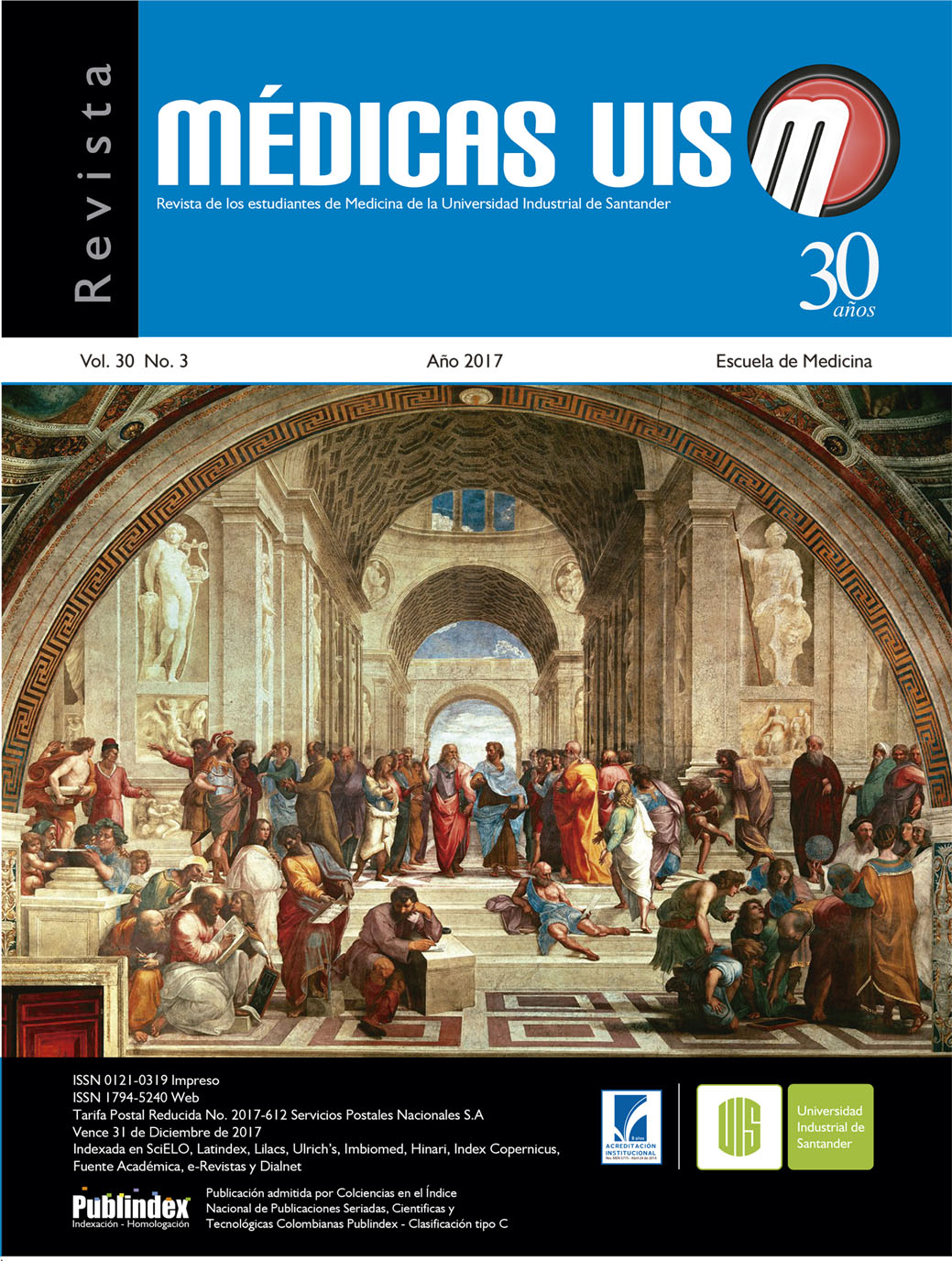Abstract
Introduction: lumbar pain is a condition catalogued as one with the higher rate of medical services consultation. In office workers there is also a high prevalence, thus is necessary to generate intervention plans since primary intervention encourage improvement in health status of this population. Objective: to determine the effects of an exercise plan on low back pain in office workers. Material and method: it was conducted an exercise plan in the office based in the strengthening of the abdominal girdle, the neck´s deep muscles and the stretching of back straight chain in 17 workers of a company located in Bogota, for four weeks, and evolution respect to low back pain was evaluated through the Roland Morris questionnaire. Tools were applied at the end of the four weeks intervention and follow-up at six months was performed. Results: a decrease in pain by two units is evident after four weeks of intervention (p<0.05), this decrease in pain was maintained after six weeks; likewise, the inability decreases in three units (p<0.05) and results are also maintained to track. Conclusion: An exercise plan based in the strengthening of the abdominal girdle, the neck´s deep muscles and the stretching of back straight chain reduces pain and disability in office workers, this effect was maintained at 6 months.MÉD.UIS. 2017;30(3):83-8.
References
2. Palomino B, Jiménez L, Ferrero A. El dolor lumbar en el año 2009. Rehabilitación. 2010;44(1):69-81 .
3. Cardenas R. Dolor lumbar: una aproximación general basada en la evidencia. Univ. Méd. Bogotá. 2008;49(4):509-20.
4. Janwantanakul P, Pensri P, Moolkay P, Jiamjarasrangsi W. Development of a risk score for low back pain in office workers - a cross-sectional study. BMC Musculoskeletal Disorders. 2011;12(23):2-8.
5. Vidarte J, Vélez C, Sandoval C, Alfonso M. Actividad física: estrategia de promoción de la salud. Promoción Salud. 2011;16(1):202-18.
6. Prawit J, Sitthipornvorakul E, Paksaichol A. Risk factors for the onset of nonspecific low back pain in office workers: a systematic review of prospective cohort studies. J Manipulative Physiol Ther. 2012;35(7):568–77.
7. Del Pozo B, Gusi N, Adsuar JC, del Pozo J, Parraca JA, HernandezMocholí M. Musculoskeletal fitness and health-related quality of life characteristics among sedentary office workers affected by sub-acute, non-specific low back pain: a cross-sectional study. Physiotherapy. 2013;99(3):194-200.
8. Hernández R, Fernández C, Baptista MP. Metodología de la investigación. 5th ed. Mexico:Mc Graw Hill. 2010.
9. Roland M, Morris RW. A study of the natural history of back pain. Part I: Development of a reliable and sensitive measure of disability in low back pain. Spine. 1983;8(2):141-4.
10. Guc E, Galdames S, Rebolledo P. Adaptación cultural y validación de la versión chilena del Cuestionario de Discapacidad RolandMorris. Rev méd Chile. 2014;142(6):716- 22.
11. Falla D, Jull G, Russell T, Vicenzino B, Hodges P. Effect of neck exercise on sitting posture in patients with chronic neck pain. Phys Ther. 2007;87(4):408-17.
12. Schomacher J, Erlenwein J, Dieterich A, Petzke F, Falla D. Can neck exercises enhance the activation of the semispinalis cervicis relative to the splenius capitis at specific spinal levels?. Man Ther. 2015;20(5):694-702.
13. Cittone JM. Méthode Mézières. Encycl Méd Chir. 1999;8:1-7.
14. Houshang A, Heydari M, Jalil S, Mostaghaci M, Hossein M, Taheri M. Ergonomic intervention, workplace exercises and musculoskeletal complaints: a comparative study. Med J Islam Repub Iran. 2014;16(1):28-69.
15. Lawand P, Lombardi I, Jones A, Sardim C, Ribeiro LH, Natour J. Effect of a muscle stretching program using the global postural reeducation method for patients with chronic low back pain: A randomized controlled trial. Joint Bone Spine. 2015;82(4):272–7.
16. Merepeza A. Effects of spinal manipulation versus therapeutic exercise on adults with chronic low back pain: a literature review. J Can Chiropr Assoc. 2014;58:456-66.
17. França FR, Burke TN, Caffaro RR, Ramos LA, Marques AP. Effects of muscular stretching and segmental stabilization on functional disability and pain in patients with chronic low back pain: a randomized, controlled trial. J Manipulative Physiol Ther. 2012;35(4):279-85.
18. Falla D, Jull G, Russell T, Vicenzino B, Hodges P. Effect of neck exercise on sitting posture in patients with chronic neck pain. Phys Ther. 2007;87(4):408-17.
19. Rencher N, George J, Vehrs P, Ridge S, Fellingham G. The Acute Effects of Whole-Body Corrective Exercise on Postural Alignment. Int J Exerc Sci. 2015;8(3):213-23.
